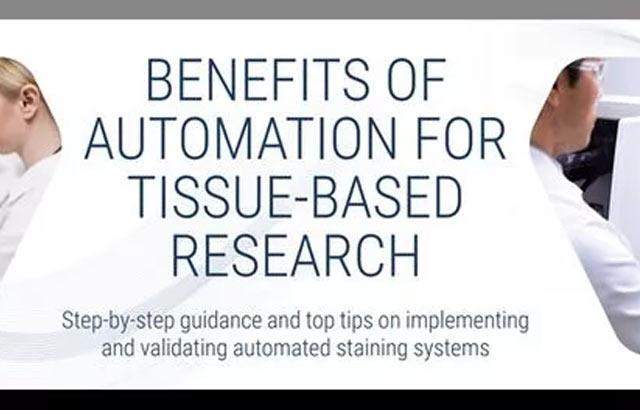Enhanced Automated Multiplex Capabilities on Leica Biosystems BOND Research System


There is an ever-increasing demand to derive more information from limited samples. Multiplex staining provides a means of visualizing many targets in a single tissue section, with the ability to accurately resolve spatial relationships between targets. It is a vital tool in establishing expression profiles of immune checkpoint markers in the tumor microenvironment. Multiplex staining has historically been a long process, and when done manually is generally performed over 2 or more days, depending on the number of markers and chromogen combinations used. Automated chromogenic multiplexing applications have largely been limited to 2- or 3-plex stains and to conduct more than 3-plex had required a combination of manual steps (e.g. pre-mixing chromogens) incorporated with several processing runs on the instrument. As a result, these workflow inefficiencies often hindered optimal assay design and staining quality.
The Leica Biosystems BOND research system capabilities have been expanded to further support the need for automating chromogenic multiplexing in tissue. Discover how the new features and assays combine to support automated 6-plex chromogenic multiplexing
학습 목표
- Discover the multiplex capabilities of Leica Biosystems BOND research system and how it supports chromogenic and fluorescent multiplexing
- Learn how to utilize the new features of research BOND software to support multiplexing
- Review optimized examples of how to automate 6-color chromogenic multiplexing on BOND research system
발표자 소개

Damian is the Global Product Manager for the clinical and research BOND systems and is based in Melbourne, Australia. Damian joined Leica Biosystems as a Scientist in 2007 working on the development of BOND-III. Throughout his career at Leica Biosystems he has held numerous roles working across the broad portfolio of Leica Biosystems products, included spending 7 years based out of the Newcastle UK site before returning to Australia in 2018.

Dean joined Leica Biosystems in 2016 and is a senior scientist in the R&D team in Melbourne, working on advanced staining projects. He graduated from Monash University where he pursued a PhD, with the department of Immunology and Pathology. During this time, he investigated the role of T cell lineages in mediating inflammatory retinal disorders. He assessed cellular interactions using fluorescent multiplex IHC with confocal microscopy imaging of retinal whole mounts.
Related Content
Leica Biosystems 콘텐츠는 Leica Biosystems 웹사이트 이용 약관의 적용을 받으며, 이용 약관은 다음에서 확인할 수 있습니다. 법적고지. 라이카 바이오시스템즈 웨비나, 교육 프레젠테이션 및 관련 자료는 특별 주제 관련 일반 정보를 제공하지만 의료, 규정 또는 법률 상담으로 제공되지 않으며 해석되어서는 안 됩니다. 관점과 의견은 발표자/저자의 개인 관점과 의견이며 라이카 바이오시스템즈, 그 직원 또는 대행사의 관점이나 의견을 나타내거나 반영하지 않습니다. 제3자 자원 또는 콘텐츠에 대한 액세스를 제공하는 콘텐츠에 포함된 모든 링크는 오직 편의를 위해 제공됩니다.
모든 제품 사용에 다양한 제품 및 장치의 제품 정보 가이드, 부속 문서 및 작동 설명서를 참조해야 합니다.
Copyright © 2024 Leica Biosystems division of Leica Microsystems, Inc. and its Leica Biosystems affiliates. All rights reserved. LEICA and the Leica Logo are registered trademarks of Leica Microsystems IR GmbH.



